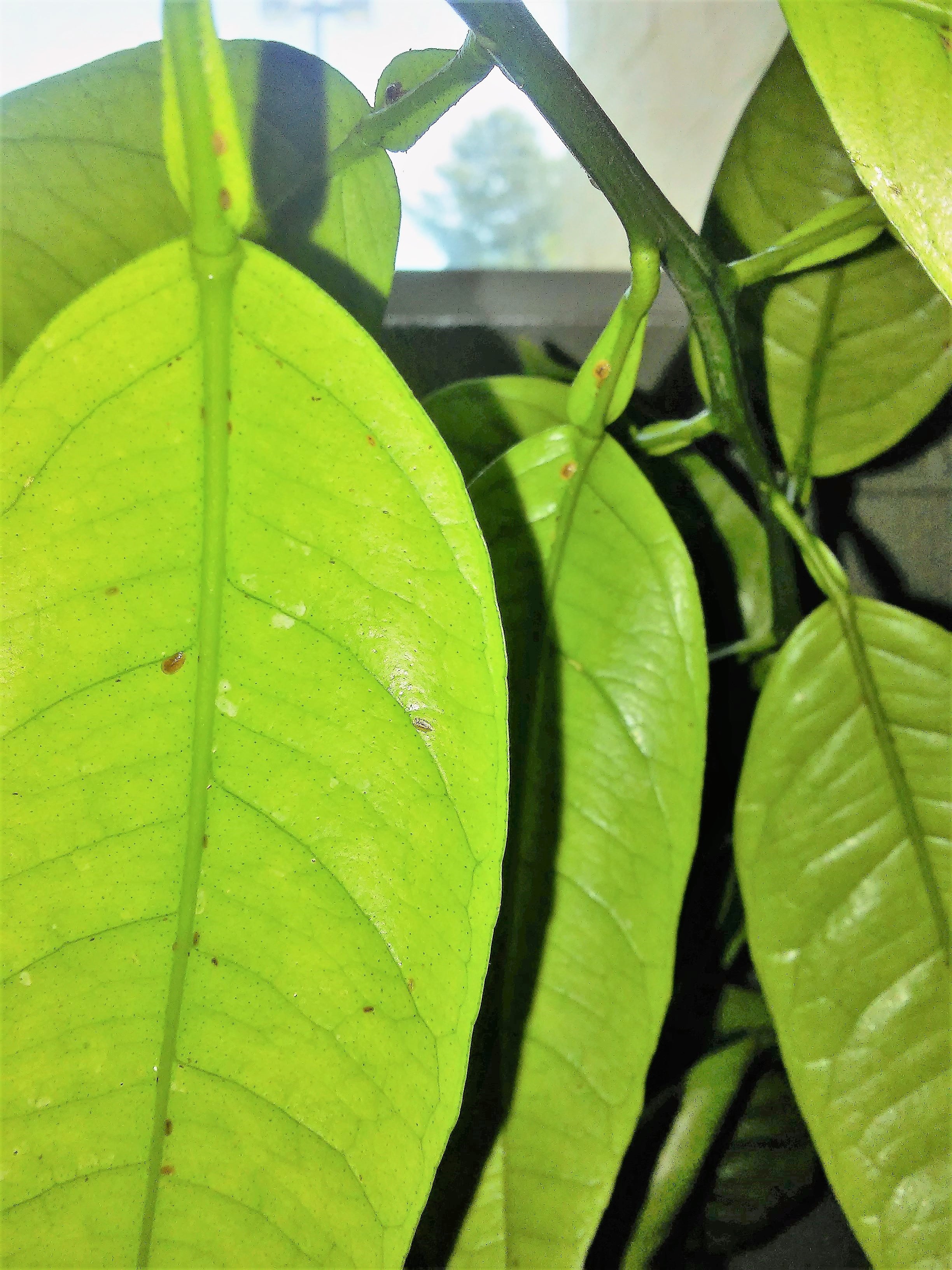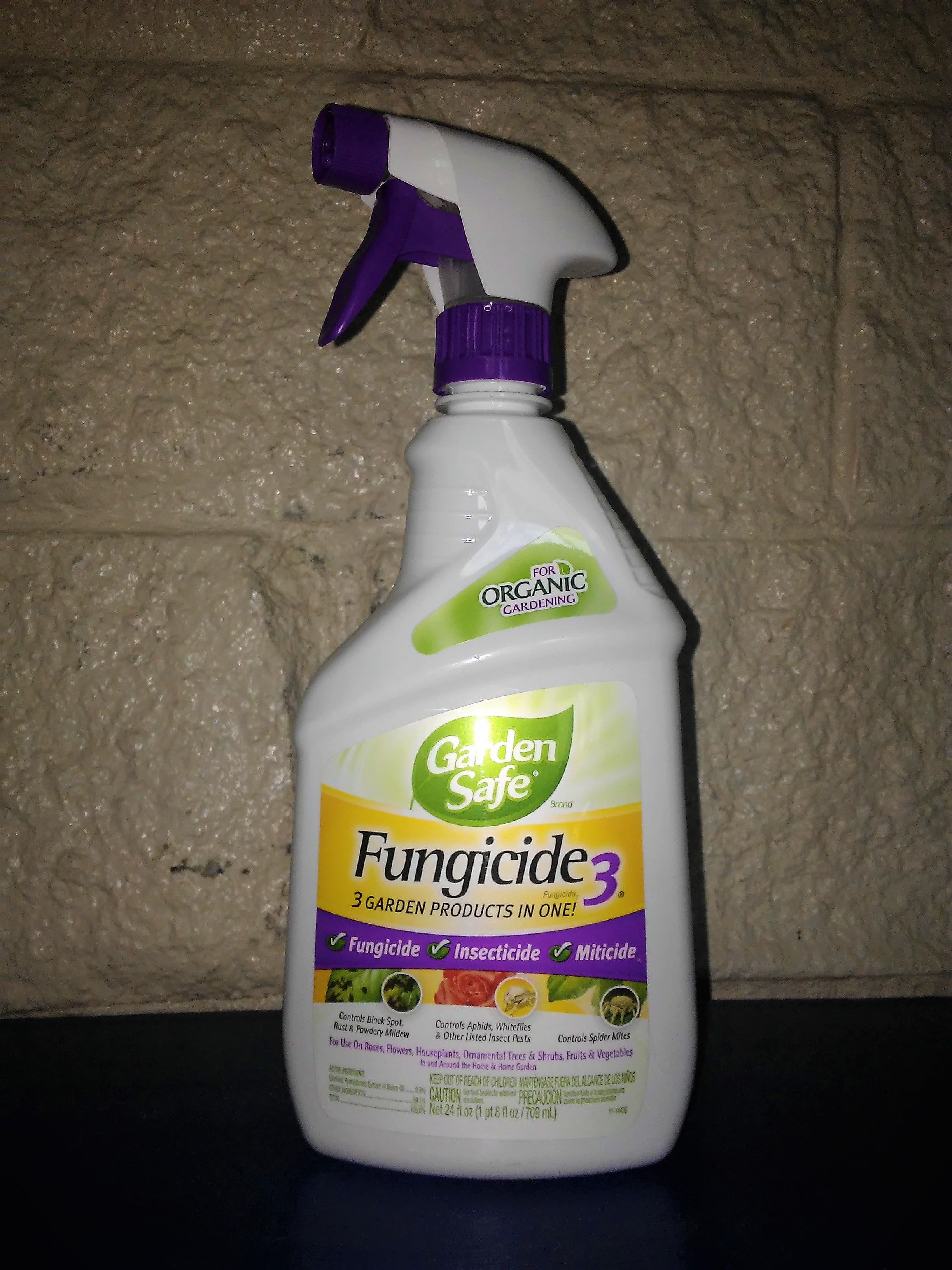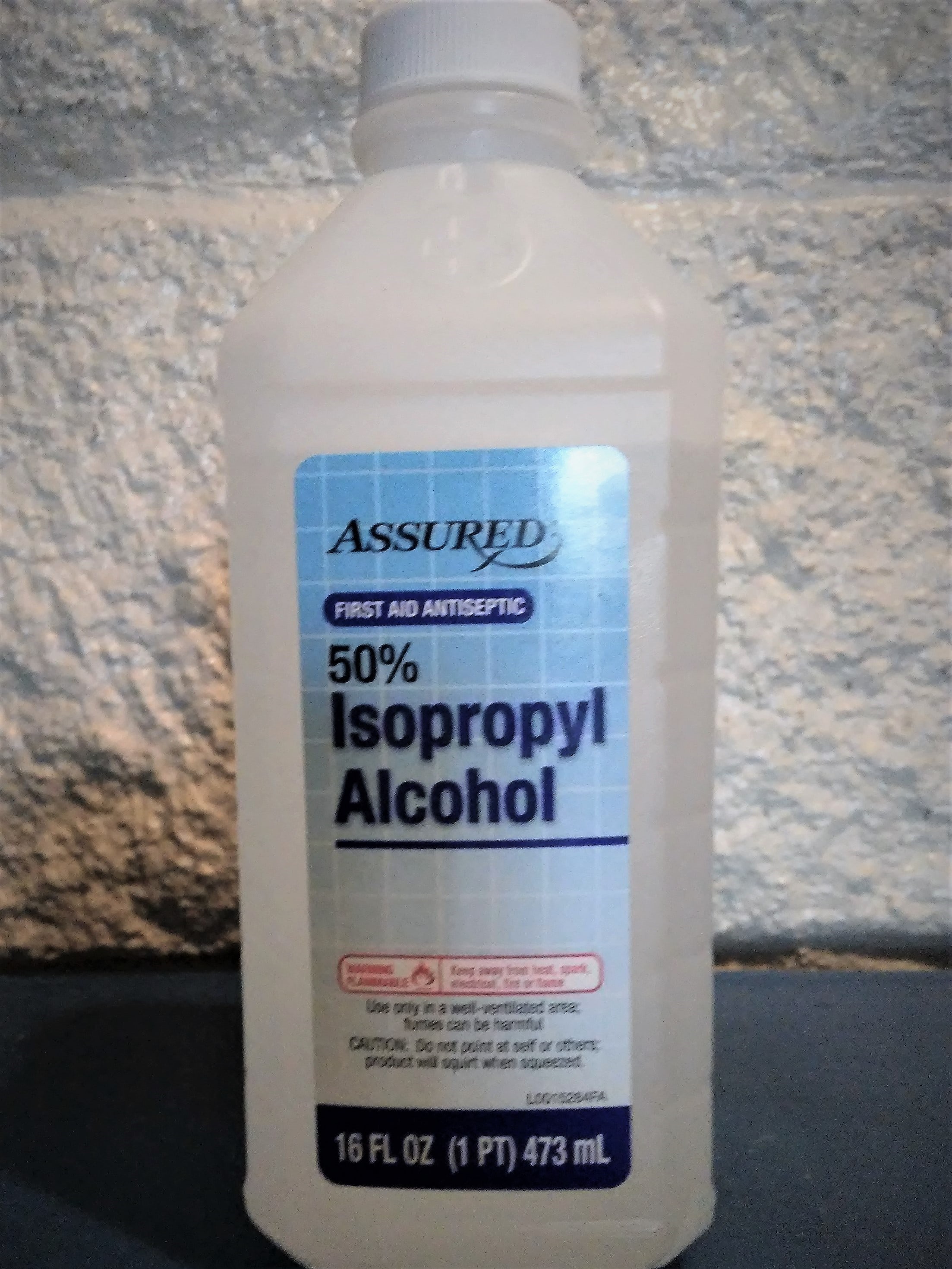Today we are going to talk about how to get rid of brown soft scale. While there are many different types of scale insects, this one is arguably the most common. It can be found on several different species of plants and is a common pest in greenhouses and nurseries. It can also affect many different types of citrus and ornamental plants, which is another reason why brown soft scale can be such a common pest.
Note: We are going to be talking about getting rid of brown soft scale in a houseplant situation. Landscape plants that are infected with brown soft scale will benefit most from either a good hosing down with an insecticide, introducing natural enemies (such as ladybugs or lacewings), or by using a systemic that is properly applied. Caution when using a systemic however… be sure that you follow the labels. And only use on edible plants according to the recommended guidelines.
So… What do these little pests look like? …

This is a picture of my dwarf citrus tree (a tangerine hybrid). See all the brown spots? Those are the adult female scales. They like to hide along the underside and ridges of the plant, as well as along the stem. There are also very small spots all over the leaves. These are the young scale insects and they can travel around on the plant and like the adults, feed off of it like an aphid would. This causes the leaves to exude a sticky substance.
So, if you see spots and the leaves get sticky… you’ve got brown soft scale…
Another sign of brown soft scale is if you see ants invading your plants. The ants are attracted to the sticky sap. They can’t get this sap themselves, but insects like aphids or scale insects can get to it. So if you see ants crawling through your plant, you most likely have aphids or scale insects.
My poor little citrus tree…
I first noticed a few small spots when I brought this little guy home from the nursery. I should have taken care of it then and there, but life got in the way. Next thing I knew, the one or two turned into several dozen!
Now I definitely had a brown soft scale problem, but I didn’t know how to get rid of them.
So I did some research and ended up trying a couple of different things that were recommended online. Here’s a list of what worked, and what didn’t work.
First Method: Hand picking…
Unless you have an incredible eye and/or a very small plant, I would not suggest this method. While it can be used along with other methods, it is just too easy to miss one of those females (which can produce up to 250 eggs each!). This can be a good control when you’ve got a spare minute, but it is extremely difficult to completely eliminate these guys with just handpicking…
Second Method: Insecticide…
I bought a generic insecticide from Walmart for $5. Not too bad. I sprayed it at night when it would have a chance to dry before my toddler and my dog got up in the morning. This is the one that I used, but there were several different ones that I could have used that all listed scale as one of the targeted insects. (I chose the added fungicide so that it could potentially be used for any fungal problems that may arise in the future).
I found that first off, I had to spray it like crazy! You need to make sure that the plants get full coverage to kill any little guys in any little crevices. Overall, it helped to control the amount of scales, and might have even cut back on the number of the scale insects. However, they eventually made a comeback. This led me to continue to repeat applications, but then I was worried about spraying so much insecticide in the house.
If it were a smaller plant this might have worked as I would have been able to take it outside and sprayed it like crazy (where I wouldn’t be concerned with furniture and inhalation issues). But with it being a bit larger I couldn’t easily bring it outdoors… plus in the freezing Idaho temperatures my plant wouldn’t have enjoyed it very much 🙁
So this made the insecticide a bit unreasonable for me. But I have to admit… it did get rid of some of the scale. So if you have a smaller plant or you’re able to bring it outdoors into a well-ventilated area, then I would definitely suggest this option.
Some options other than Fungicide 3 are insecticidal soap, horticultural oil, or a triple-action disease, fungus, and insect control. These can be picked up at your local Lowe’s or Home Depot.
Third Method: Hand cleaning…
This is different from the first method because I used an alcohol wipe to individually wipe each of the leaves and stems of the entire plant. This is also very hard to eliminate completely, but with the alcohol on every leaf, I found that it killed 95% of the scales. I only had to follow up one more time to clean it up for good.
I bought this isopropyl alcohol from the Dollar Tree. Not bad for $1! I applied it using cotton swabs and gently rubbed away all insects from the top and underside of each leaf. I made sure that I applied a generous amount and rubbed it all over the stems as well. This took a little bit of time, but was well worth all the time and energy.
Just make sure that you rinse it well after using a soap- or an alcohol-based liquid on the leaves. A good way to do this is to spray it thoroughly with a spray bottle filled with water. You can also rinse it off in the shower. Just be sure to wrap the pot in a plastic bag or a trash bag to keep the soil from getting too moist. If it gets too much water (especially in the winter), this could kill your plants faster than the scale insects!!!
In all, you will have to decide which method will work best for you depending on your situation and the size and number of leaves on your houseplant. And remember to always test any chemicals on a few leaves and wait for several days to make sure there is no damage. Let me know if there are any other methods you’ve tried that you approve of!
Happy digging!


